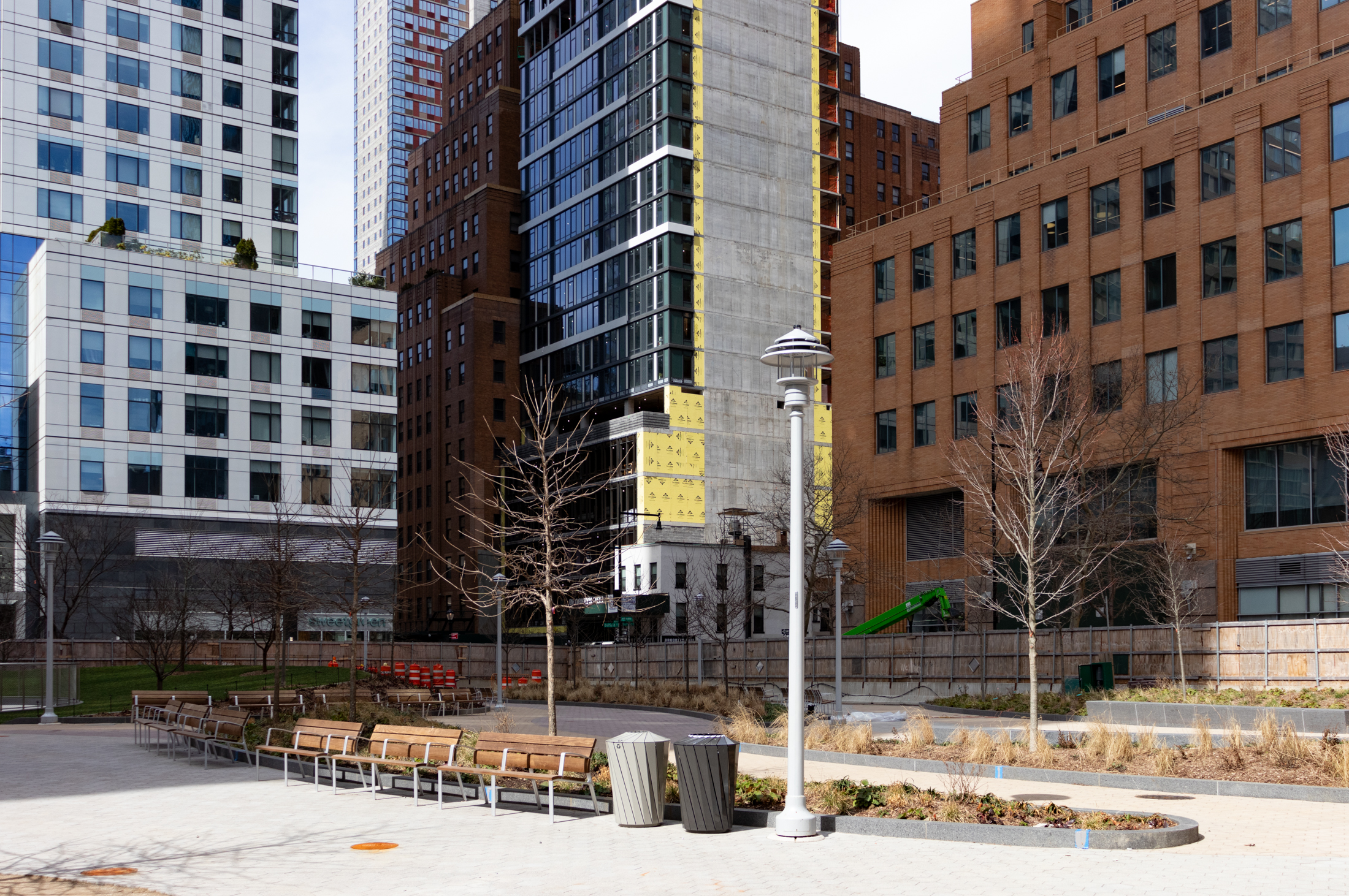Building of the Day: 172 Cadman Plaza East
Brooklyn, one building at a time. (Throwback Thursday: a look at an old piece, rewritten and updated with new info) Name: Brooklyn War Memorial Address: 172 Cadman Plaza East Cross Streets: Cadman Plaza West, Cadman Plaza East, near Orange Street Neighborhood: Downtown Brooklyn Year Built: 1952 Architectural Style: Neo-Formalism, perhaps? Architect: Eggers & Higgins (building),…

Brooklyn, one building at a time.
(Throwback Thursday: a look at an old piece, rewritten and updated with new info)
Name: Brooklyn War Memorial
Address: 172 Cadman Plaza East
Cross Streets: Cadman Plaza West, Cadman Plaza East, near Orange Street
Neighborhood: Downtown Brooklyn
Year Built: 1952
Architectural Style: Neo-Formalism, perhaps?
Architect: Eggers & Higgins (building), Charles Keck (sculptures and memorial)
Other Buildings by Architect: (Eggers & Higgins) – Damrosch Park, Lincoln Center; Vanderbilt Hall, NYU Law School; Jacob Javits Building, NYC Civic Center; Silliman College, Yale University
Landmarked: No
The story: This huge monument honors Brooklyn’s war dead from World War II, and is a somber reminder of the sacrifices ordinary people have made for our country. Unfortunately, for something as large and important as it is, this is the most lost memorial in Brooklyn. I think it’s because of where they put it, at the back end of Cadman Plaza, a huge chunk of land that doesn’t flow as a park, or as a plaza.
The first time I saw the Memorial, long ago, I didn’t know what it was, and even then, it reminded me of a lost monument, like some ancient artifact found when one brushed back the underbrush, and there it was. At the time, the entire Plaza was not well maintained, and that added to the feeling of discovery.
Critic Leslie Katz, writing in the Nation, in 1962 called it “a billboard made of stone, with two apathetic stone giants doing a commercial for grief on either side.” The problem is while the statues are quite beautiful, the building is just too large, there’s too much space between the figures, so any personal feeling of intimacy is just lost. Mr. Katz had a point, but I wouldn’t call them “apathetic.”
The building was designed by the firm of Eggers & Higgins, a firm that came out of the two men working for famed architect Russell Pope, the City Beautiful architect of the Jefferson Memorial, the National Archives, and other buildings in Washington D.C. Otto Reinhardt Eggers was Pope’s draftsman and right hand for many years. Daniel Paul Higgins worked for Pope, as well. After Russell Pope died in 1937, the pair changed the name of the firm to Eggers and Higgins.
They had a very successful partnership, especially from the 1940s through the ‘60s, designing many large and prominent buildings in New York, Washington, DC and Hartford, Connecticut, among other cities. Higgins died in 1953, Eggers died in 1964. The firm became the Eggers Partnership in 1970, and is now a part of RMJM Hillier, a leading multi-national architectural firm.
The Memorial building is austere, designed to be a canvas and background for the statues and inscriptions sculpted by Charles Keck, honoring the heroic dead of the Second World War. Keck also was a valuable assistant to a famous man, sculptor August Saint-Gaudens, the Beaux-Arts artist who sculpted some of this country’s finest portraits in bronze and coin, including those of Abraham Lincoln and many of his Civil War era generals. Keck’s other familiar work is the statue of Father Duffy, in Times Square, Manhattan.
The male and female figures are classically robed, with downcast and sorrowful expressions. Between them is a dedication to Brooklyn’s war dead. Before them are soccer moms, nannies, AstroTurf, students, and playing children. There is little interaction, except to use the memorial as a boundary for playing kids. The spaces have nothing to do with each other. The grief is not felt. There is a vast disconnect here.
Thanks to Francis Morrone for much of the information, as found in his Architectural Guidebook to Brooklyn.
(Photo: S.Spellen)













Ah, yes, this is, indeed, a beautiful memorial. Every time I stand before it, I am humbled by and forever thankful for the sacrifices made by our armed forces to defend our freedoms. Their actions make me proud to be from Brooklyn, proud to be an American.
Nice piece. Have to say though – I like the fact that this memorial is kind of lost. It makes it different. And when you sit and take it in, I think you really can appreciate the grief.